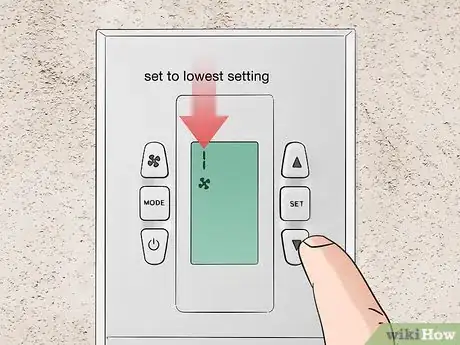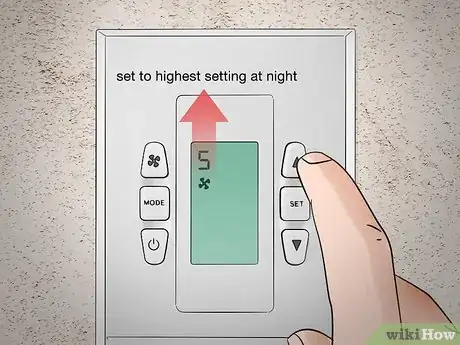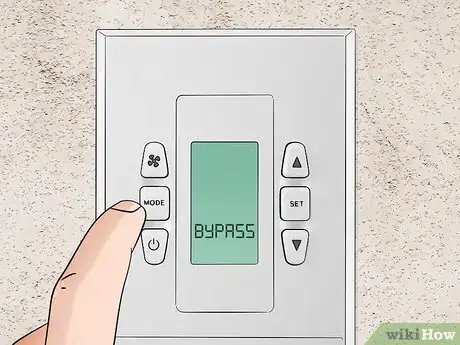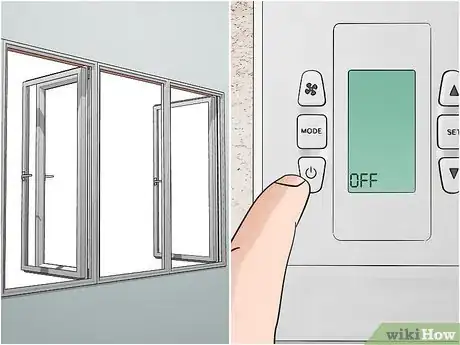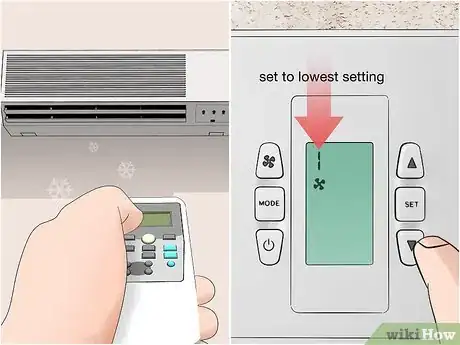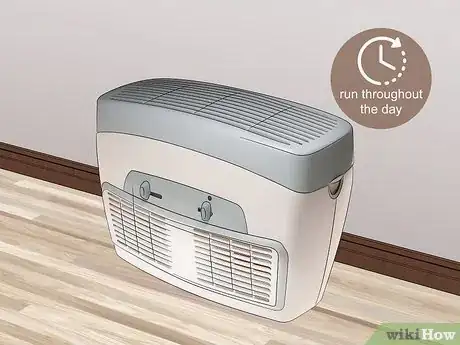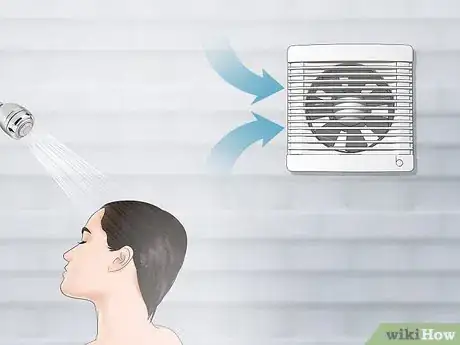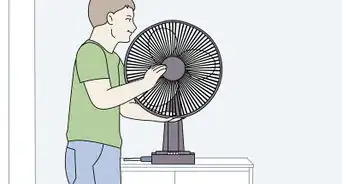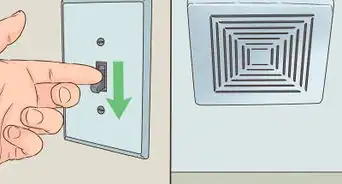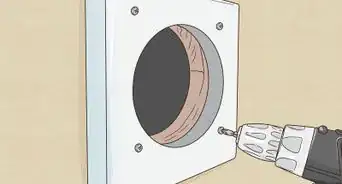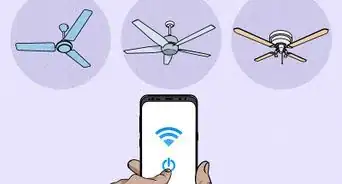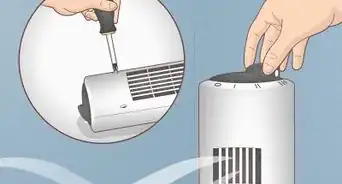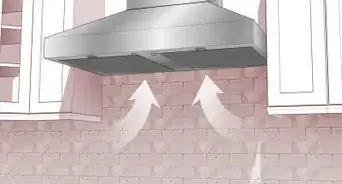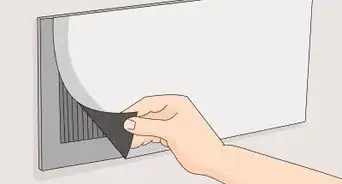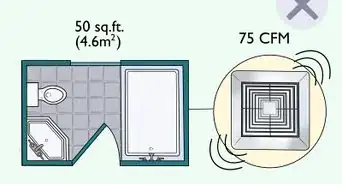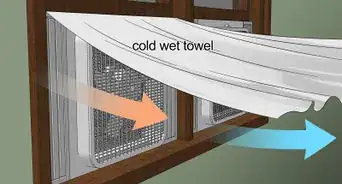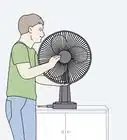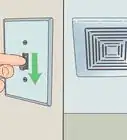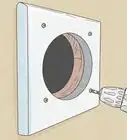This article was co-authored by wikiHow staff writer, Hunter Rising. Hunter Rising is a wikiHow Staff Writer based in Los Angeles. He has more than three years of experience writing for and working with wikiHow. Hunter holds a BFA in Entertainment Design from the University of Wisconsin - Stout and a Minor in English Writing.
This article has been viewed 36,775 times.
Learn more...
A heat recovery ventilation (HRV) unit pumps stale, humid air out of your home and brings in fresh air from outside. While you’ll normally use HRVs in winter to prevent dry air inside your home, you can also use it to help keep your home feeling cool and comfortable during the summer. Every HRV will have a different controller, but most will use similar ventilation and humidity settings. Just be sure to readjust the settings as temperatures drop back down in the winter.
Steps
Adjusting the Settings
-
1Locate the HRV controller in your home. The HRV unit is a large unit connected to your ventilation system, but you’ll use a small controller to turn it on and off. Check on the wall in a main room of your home near your thermostat. The controller will either have a dial, touch-screen, or buttons to control the humidity and fan speed in your home.[1]
- Controllers vary between brands, so check the instruction manual that came with your specific model.
-
2Set the HRV controller to the highest humidity setting. Look for a label that reads “Relative Humidity” or “RH” so you can change the settings. You may need to tap through a menu to find the option if you have a touch-screen controller. Raise the humidity to the highest setting possible.[2]
- Your HRV unit will start running if the relative humidity in your home goes above the setting.
- Avoid using a low humidity setting since your HRV will pump in humid air and make your home feel damp and muggy, which could lead to mold.
Advertisement -
3Use the lowest ventilation settings during the day. Look for a fan symbol on a button or find a switch that changes the unit’s fan speed on the unit’s wall controller. The minimum setting will vent slowly so fresh air cycles through your home to eliminate any stale odors. Leave the fan set on low so you don’t bring hot air into your home from the outside.[3]
- You can switch to the highest setting to quickly vent air from your home. You may use this if you have a lot of guests, someone’s smoking indoors, or if there are strong odors from cooking.
Variation: If you’re not at home and you want to be more energy-efficient, check if your HRV has an intermittent setting where it turns on for 20 minutes before shutting off for 40 minutes.
-
4Turn the fan on high speed at night to cool your home. While outdoor air cools as the sun sets, it may stay warm and uncomfortable inside your home. Switch the ventilation to the highest fan setting so the HRV pumps in the cool air. When you wake up, be sure to change it back to the lowest setting so it doesn’t warm up your home throughout the day.
- You may be able to set a ventilation schedule on more advanced HRV controllers. Check the instruction manual to see if your model has these capabilities.
-
5Try the summer bypass mode if your unit has one to bring in cool air. Some models of HRVs have bypass vents, which direct incoming air away from the unit’s heating chamber. Read through your unit’s instruction manual to see if you have a summer bypass option. If the temperature and humidity are lower outside than they are inside your home, switch to the bypass mode instead.[4]
- You may be able to hire an HVAC specialist to add bypass vents to your HRV.
- Normally, the heat from the inside air gets trapped in the unit’s chamber and warms up the outside air being drawn in. The bypass tubes are on the outside of the chamber so the air stays the same temperature as it comes in your home.
Reducing Humidity during Summer
-
1Shut off the HRV and open windows when it’s cooler outside than indoors. Locate the power button or switch on the HRV controller, and change it to the Off position. Open up as many windows in your home as you can so the fresh air blows through your home and cools down your space. Keep your eye on your thermostat and the outside temperature and close the windows when it starts heating up again.[5]
- If you try running your HRV, the cool outside air will warm up as it pumps in and make your home feel uncomfortable.
- Opening your windows will let in more pollen and dust, which may make allergies worse.
-
2Run an air conditioner with your HRV to cool the outside air. Keep all of your windows closed and set the air conditioner to your desired temperature. Leave your HRV on the lowest fan setting while the AC runs. The cold air will get trapped inside of the unit and help cool warm air as it filters into your home. That way, you avoid having stale air in your home since it filters out through your vents.[6]
- You can use any type of air conditioner with your HRV.
- Using your HRV and air conditioner together also helps you save energy since the air conditioner won’t have to work as hard.
-
3Run a dehumidifier to help remove moisture from the air. HRVs don’t remove moisture from the air, so the fresh outside air may still feel damp or muggy when it enters your home. Set up a dehumidifier in one of the main rooms of your home and run it throughout the day. Keep your windows and doors closed so outside air doesn’t come in. The dehumidifier will collect moisture so the air feels drier.[7]
- Air conditioning naturally dehumidifies the air, so you do not need a dedicated dehumidifier.
Tip: Dehumidifiers collect water, so you may have to empty a reservoir or setup a drain hose so it doesn’t overflow.
-
4Use the HRV exhaust vents in your bathroom when you bathe. The steam from your bathroom adds humidity to your home and can raise the temperature inside. Most HRVs have exhaust fans added to bathrooms to filter moist air out of your home immediately. Start the exhaust fan as soon as you start bathing and allow it to run for about 1 hour after you finish.[8]
- If you don’t have an exhaust vent, then open a window in or near your bathroom so the humidity can escape. Otherwise, mold could grow in the room.
Warnings
References
- ↑ https://www.hydro.mb.ca/your_home/resources/8_indoor_air_quality_and_ventilation.pdf
- ↑ http://www.eagle-mt.com/downloads/khp_6000_inst.pdf
- ↑ https://www.nrcan.gc.ca/sites/www.nrcan.gc.ca/files/oee/files/pdf/publications/HRV_EN.pdf
- ↑ https://www.titon.com/uk/wp-content/uploads/sites/10/2019/03/DO-5666-Iss-01.pdf
- ↑ http://www.mnshi.umn.edu/kb/scale/hrverv.html
- ↑ http://www.mnshi.umn.edu/kb/scale/hrverv.html
- ↑ https://www.hydro.mb.ca/your_home/resources/8_indoor_air_quality_and_ventilation.pdf
- ↑ https://youtu.be/vJ9PGn3vYgw?t=178
- ↑ http://www.mnshi.umn.edu/kb/scale/hrverv.html


